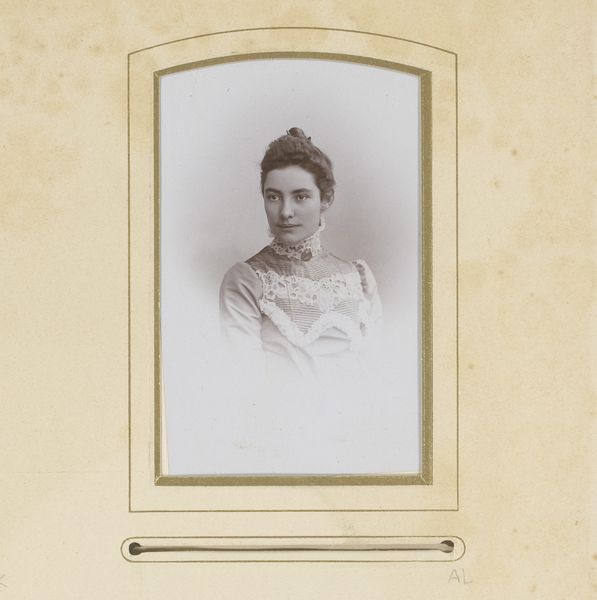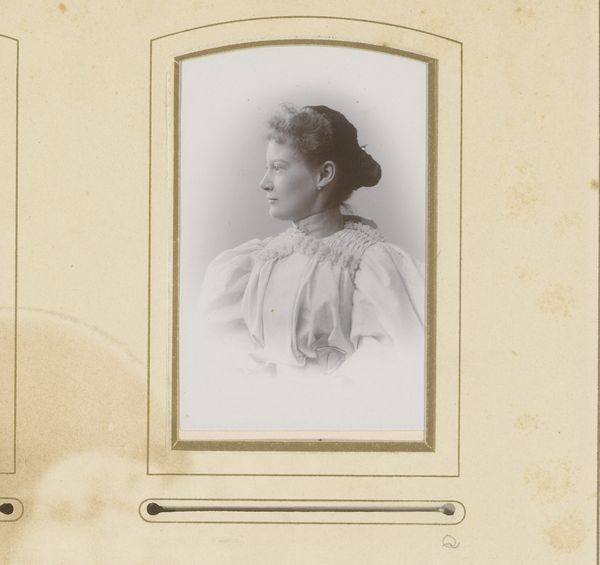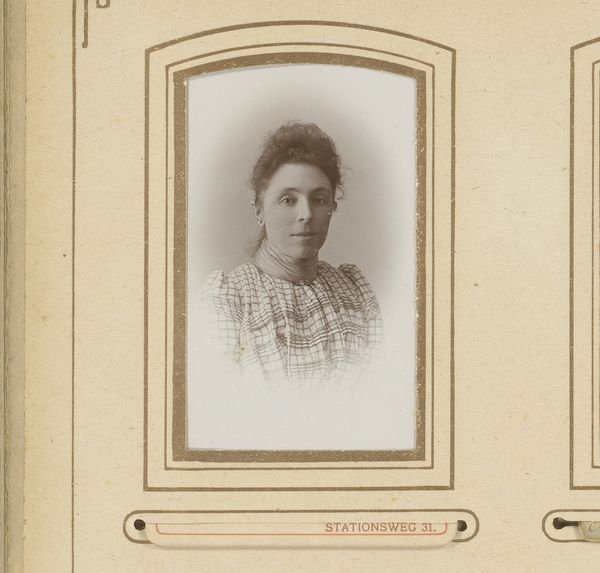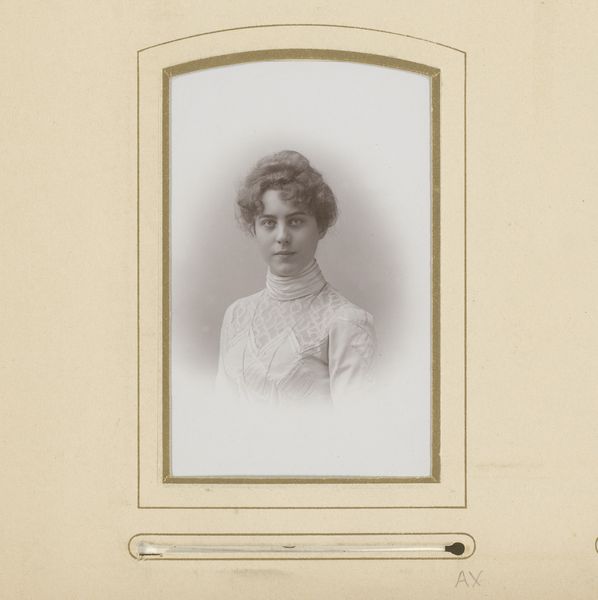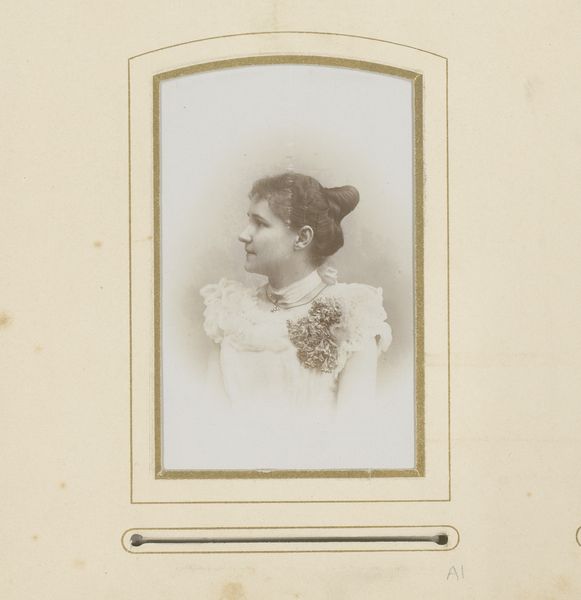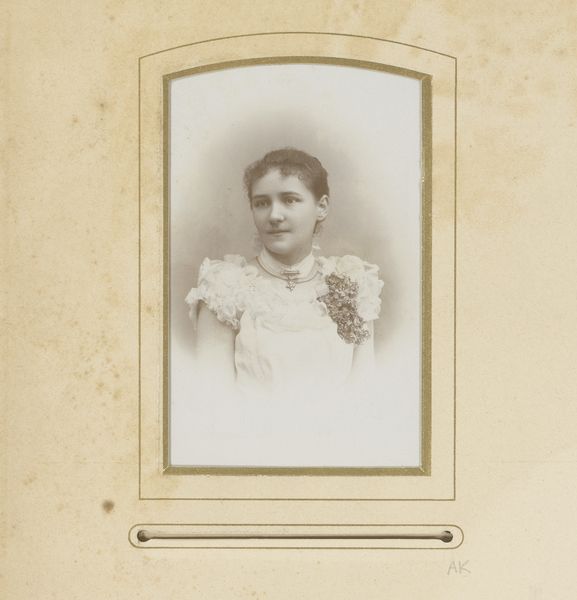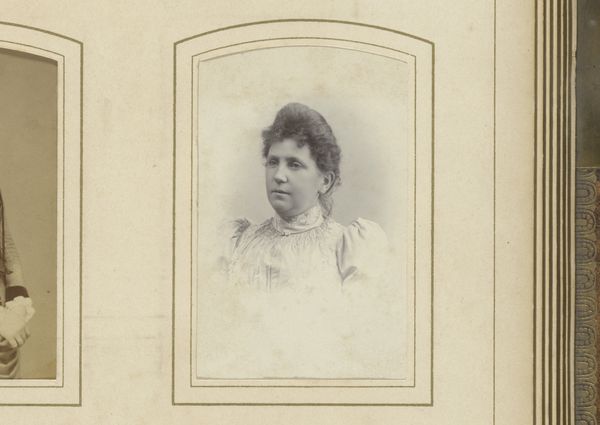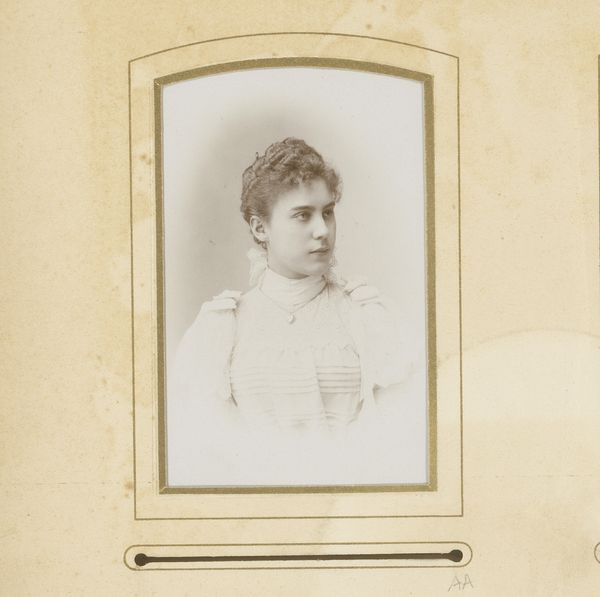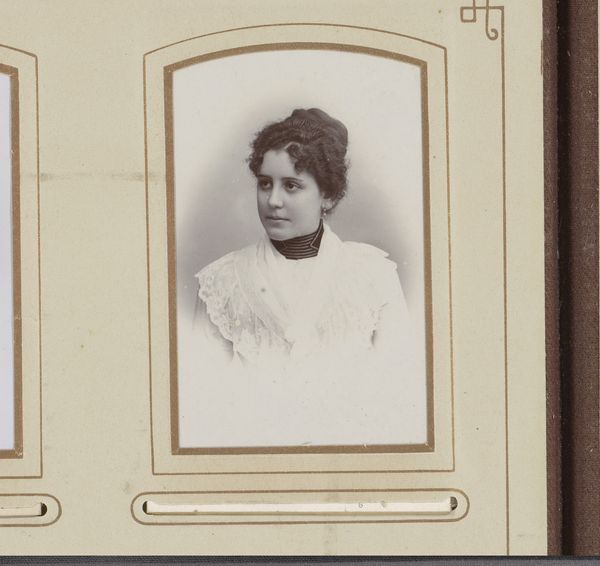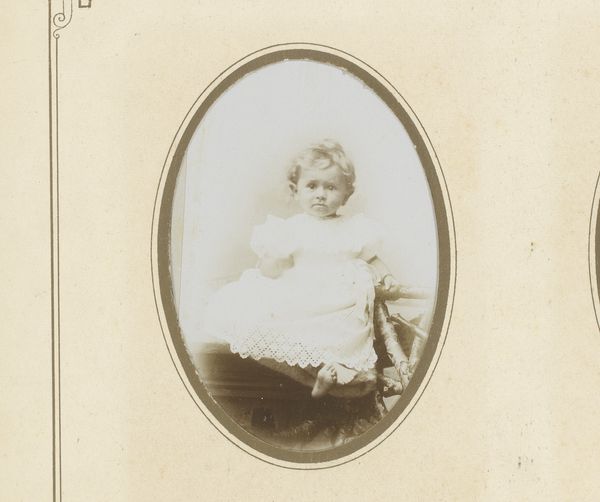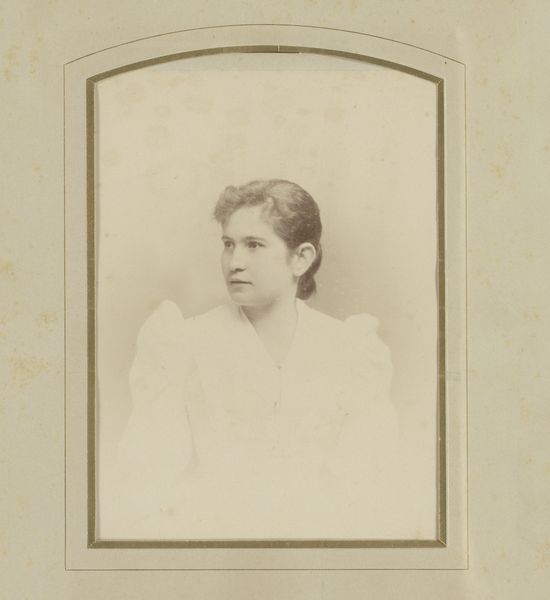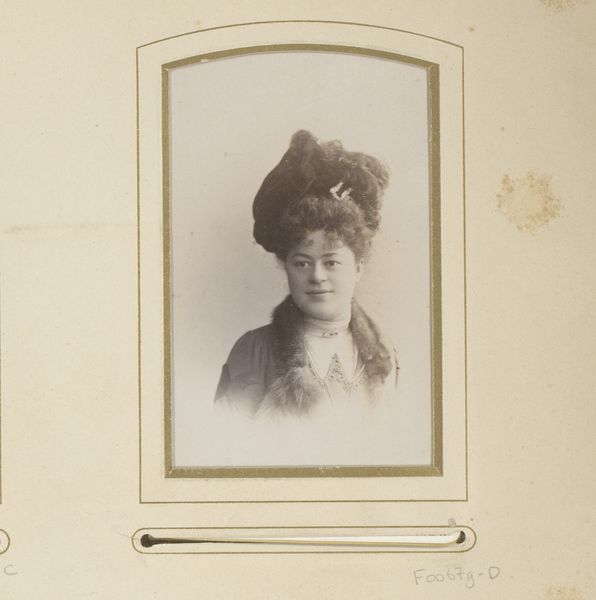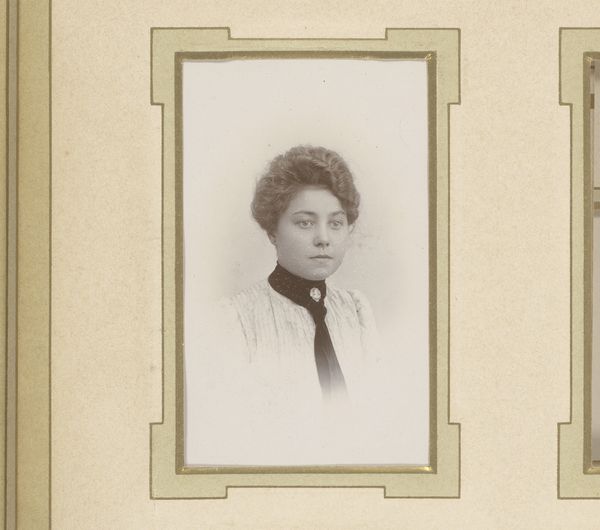
photography
portrait
pictorialism
photography
modernism
Dimensions: height 84 mm, width 53 mm
Copyright: Rijks Museum: Open Domain
Curator: Take a moment to look at this intriguing work, "Portret van een jonge vrouw met strik in het haar," or Portrait of a Young Woman with a Ribbon in Her Hair, dating roughly between 1880 and 1920. It's a photograph, currently held at the Rijksmuseum, attributed to Ferdinand Schmidt. Editor: It's ghostly. That dreamy focus combined with the sepia tones gives the woman this ethereal, almost vanished, quality. You almost feel like you shouldn't be looking at someone's private memory. Curator: That's interesting, given that photographic portraits became increasingly democratized during this period. The rise of photography allowed the middle class to participate in image-making and memorialization in a way that was previously reserved for the elite. Who was commissioning these portraits and how were they displayed and consumed? It’s less about artistic vision and more about a shifting social landscape where image and identity were being actively constructed by the masses. Editor: But Schmidt’s artistry in manipulating the medium shouldn’t be discounted. Look at the soft focus, that gentle blurring. This is Pictorialism, which sought to elevate photography to the level of painting, emphasizing mood and aesthetic effect over documentary precision. The photographer carefully selects and arranges their materials, exploring what photographic processes can produce, thus staking its claim to be considered fine art rather than mere documentation. Curator: And that ties into the marketing and reception. Art institutions legitimizing photography, exhibiting these works alongside paintings and sculptures... The portrait participates in constructing this narrative of photography as art, dictating what is framed and seen. I imagine that families proudly showed off these photographs in their parlors. Editor: Which brings it back to the materials. The paper type itself speaks to a particular era of manufacture and trade; the very act of making the image involved distinct physical processes, labor, and material resources. Curator: Absolutely. Considering how museums curate and contextualize this photograph changes how audiences understand both the art and history of image-making and who gets to tell those stories. Editor: So while at first, I thought it was about her, it's really about so much more. It is the sum of processes. Curator: Exactly. It makes one appreciate how images gain cultural value within these institutions.
Comments
No comments
Be the first to comment and join the conversation on the ultimate creative platform.
